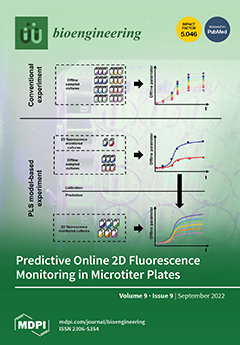Femoral neck fractures in young adults are uncommon, resulting from high-energy trauma. Despite their infrequency in this population, there is higher rate of complications, especially in the more vertical fracture line, classified by Pauwels as a type-3 femoral neck fracture. The implant type
[...] Read more.
Femoral neck fractures in young adults are uncommon, resulting from high-energy trauma. Despite their infrequency in this population, there is higher rate of complications, especially in the more vertical fracture line, classified by Pauwels as a type-3 femoral neck fracture. The implant type is of paramount importance for maintaining anatomical reduction, since it must resist the deforming forces that act on the fracture. We comparatively evaluated two constructions of the novel locking autocompression implant (X-PIN and X-PIN+P) using the finite element method and previously established methods for treating Pauwels type-3 femoral neck fractures. Six fixation models were developed for the study: a dynamic hip screw (DHS), a DHS with an anti-rotation screw (DHS+P), the inverted triangle multiple cannulated screws construction (ASNIS), the multiple cannulated screws in an L-configuration (L), and the two models of the novel locking autocompression screw (X-PIN and X-PIN+P). Under the same conditions with a load of 2100 N, the following parameters were evaluated using SIMLAB
® software: the main maximum (Max P), main minimum (Min P), localized maximum P1 (Max P1), localized maximum P2 (Max P2), total displacement, localized displacement, rotation displacement, and von Mises stress. Compared to the DHS+P and ASNIS models, the X-PIN+P model presented, respectively, increases of 51.6% and 64.7% for Max P, 85% and 247% for Min P, and 18.9% and 166.7% for von Mises stress. Max P1 did not differ between the models, but Max P2 was 55% and 50% lower for X-PIN+P than ASNIS and L, respectively. All displacement values were lower for X-PIN+P than the other models. In this FEM testing, the X-PIN+P was superior to the other models, which was due to improvement in all parameters of stress distribution, displacement, and von Mises stress compared to models using a lateral plate (DHS and DHS+P) or not (ASNIS and L).
Full article






